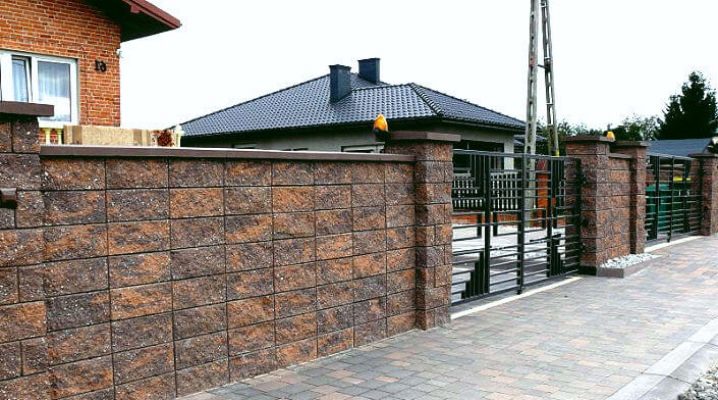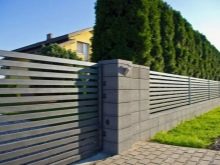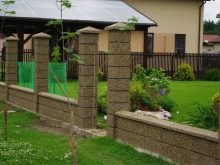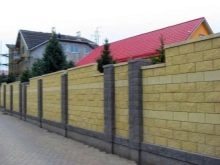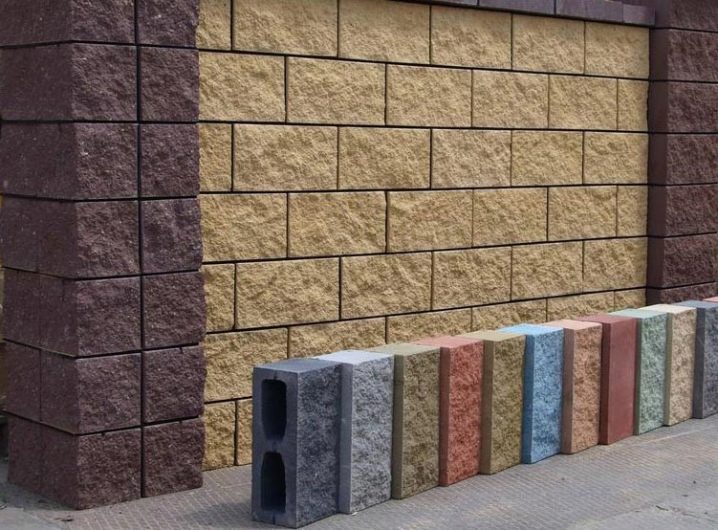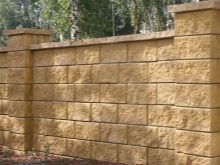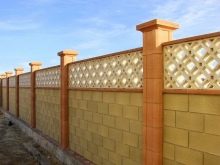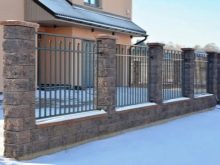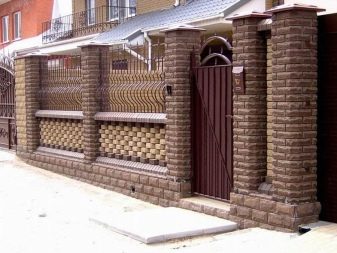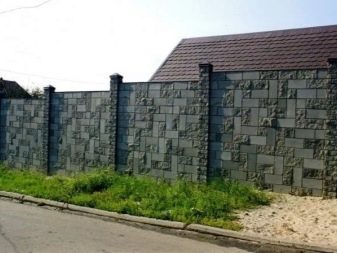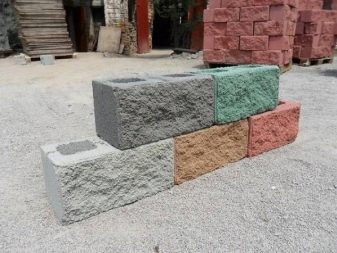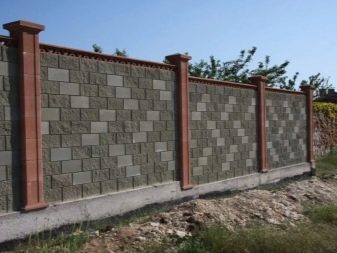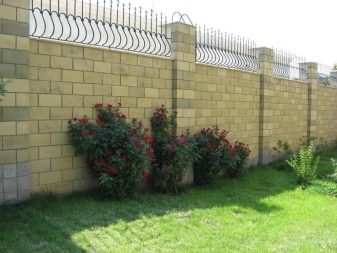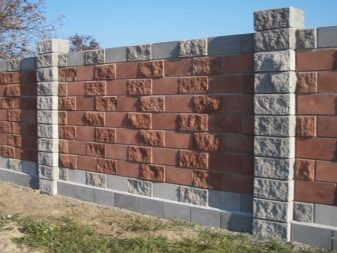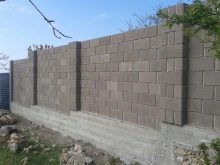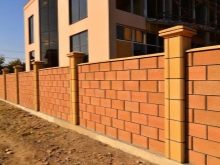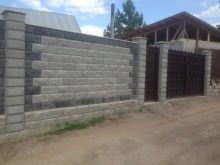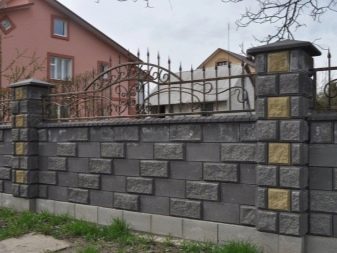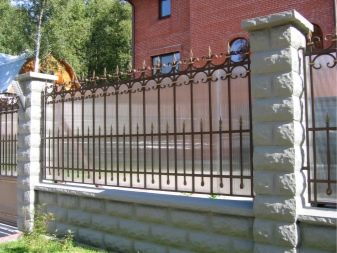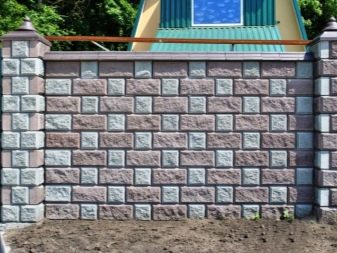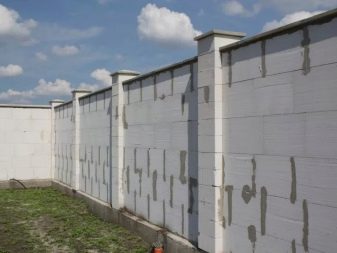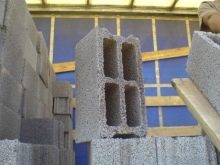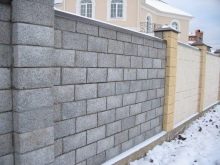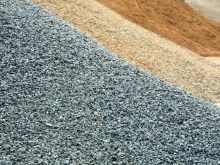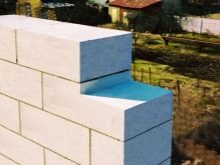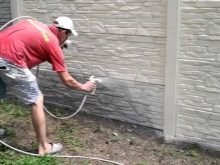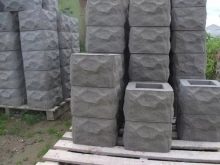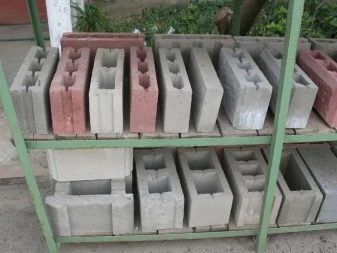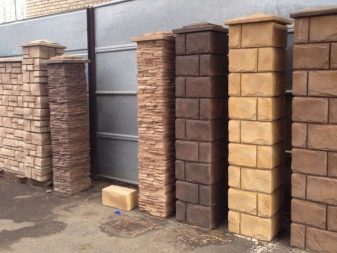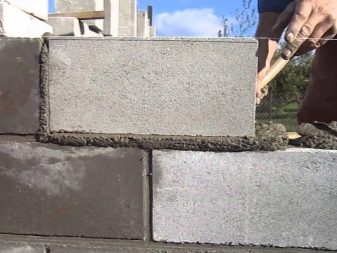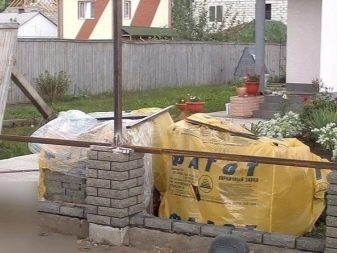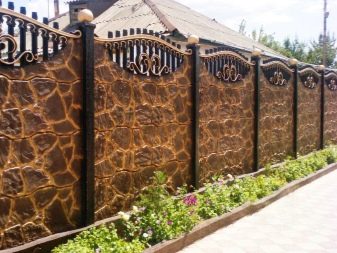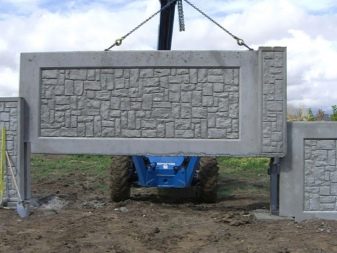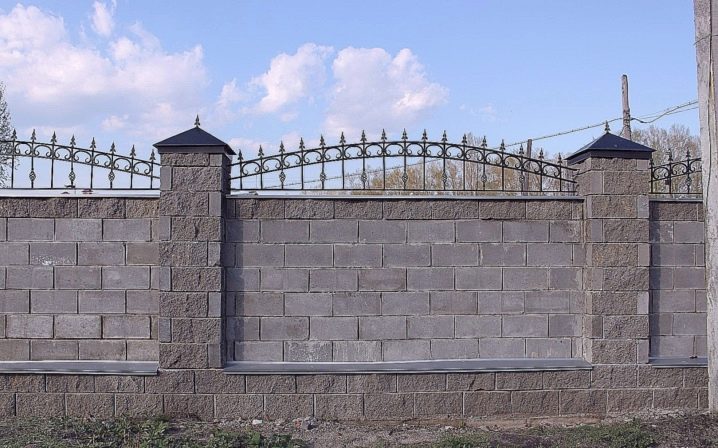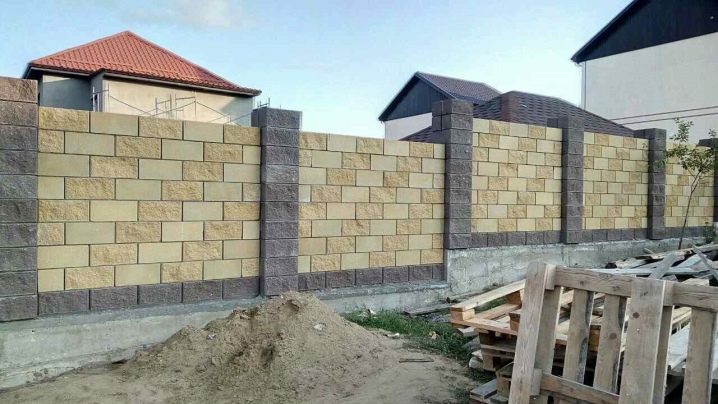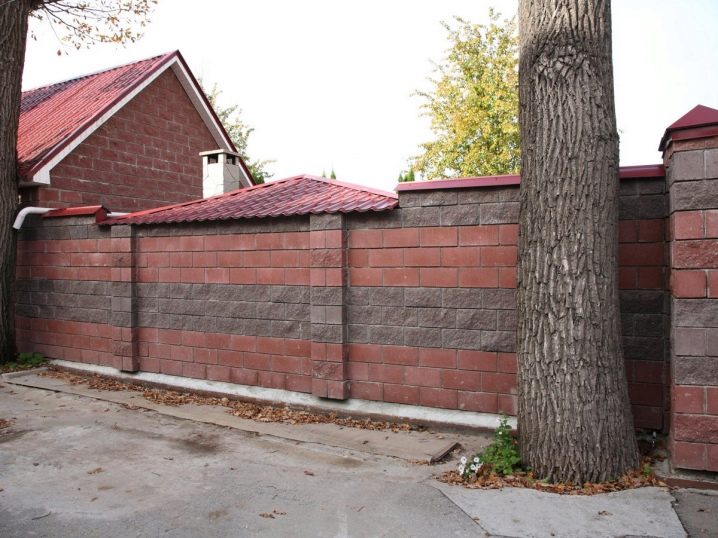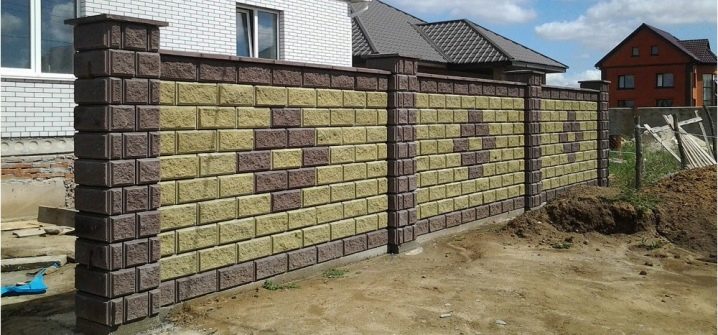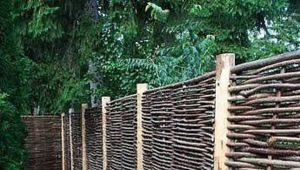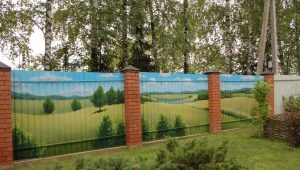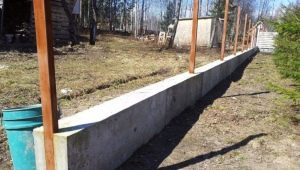How to choose blocks for the fence?
Traditionally, their own territory is separated from the one that is intended for public use, so that outsiders can clearly see that they violate private property. Some owners are limited to a small fence, whose task is to inform, rather than hinder penetration, but if the main hope is the inaccessibility of one’s own fortress, then it is better to choose a fence made of stone blocks.
What are we for?
For hundreds of years of the existence of civilization, mankind has invented many ways to organize cordons of personal territory, but until now nothing better than stone blocks for the fence has not been invented. Another thing is that today it is often not used natural stone, but its somewhat cheaper options, involving the use of a particular filler, but in general it does not affect the strength.
Stone blocks, even if they are of artificial origin, are power and reliability. The presence of any kind of filler does not greatly affect the strength of the constructed wall and the owners can be sure that the intruders will not exactly break such a fence. In order to destroy such an obstacle, we need special equipment, and robbers of any level are unlikely to decide on such a risky event.
Such a fence will easily serve for decades or even hundreds of years.
If earlier only the most powerful of this world could afford such luxury, today anyone with their own backyard can give their family a feeling of complete security through the construction of such an engineering miracle. Opportunities like this have come about through rapid progress. For example, earlier stone blocks had to be searched in the surrounding nature, and then delivered from the nearest deposit to the location of the customer.
Today, industrial enterprises are pressing any available filler with the addition of cement to a state where the end result in reliability is not inferior to natural stone. Moreover, the owner can even do the laying of the fence with his own hands, which will significantly save the cost of its construction.At the same time, the procedure is not so complicated and lengthy as to rely on the summoned masters, which makes the project even cheaper.
Advantages and disadvantages
Like any other material, the blocks for the fence have advantages and disadvantages that cannot be ignored. Making an informed choice is possible only after they have all been properly studied.
We should start with the advantages - those characteristics due to which the installation of a block fence is considered advantageous and prestigious:
- Stone fence will serve you and your distant descendants. At the same time, experts say that no extraordinary efforts are required for the construction of such a structure.
- In the modern world, a private territory is nothing if there are no physical obstacles for unauthorized persons who want to enter it. It is possible to climb over the stone fence in the same way as through any other, but it’s almost impossible to break its contour without the owner’s sanction.
- There is nothing eternal in the world, so it is not surprising that even the most reliable metal fences and even huge mansions decay and collapse over time.Stone fence, of course, will not be an exception - one day the moment will come when it will collapse. Another thing is that even the grandchildren of a person who built such a barrier are unlikely to find this moment, because natural destructive forces, like decay or corrosion, cannot affect a stone, regardless of whether it is natural or artificial.
- Many materials, perfectly showing themselves in the conditions of the room, are too unreliable on the street. The reason for this is not so much the extreme weather conditions of the street as their variability. For example, when heated in summer, the metal expands somewhat, and in winter it narrows, due to which its rapid invisible wear occurs. A stone is much less susceptible to such things, even if it has an artificial nature.
- Self-laying of a concrete fence is presented to many owners as something that requires the efforts of a large number of people, at least for the adequate transportation of heavy material. Modern engineers have taken care of this too - some materials like claydite-concrete weigh much less than a natural stone, but they are almost as good as reliability.
- Constructions made of natural stone are good in themselves, but today manufacturers have the opportunity to further decorate the blocks, giving them a certain color or texture, which allows consumers to build the fence of their dreams.
- The choice in favor of a specific material (artificial stone) does not mean at all that the consumer limits himself in the choice of design. This substance is now produced in an unlimited number of shades and varieties, which allows you to perfectly fit the object into the surrounding landscape, not to mention the fact that only the customer chooses the dimensions of the fence.
It would seem that the fence of concrete blocks - it is a solid benefit, but still there are certain factors that limit the use of this particular material, otherwise all the fences in the world would be made only of stone.
The main disadvantages of this solution include the following:
- Even the choice in favor of the lightest lightweight aggregate does not make concrete fencing easier than it would be, say, wooden. For such a heavy construction, a support is needed, which corresponds in its status - a full-fledged foundation, which will also require additional costs.
- The material itself, unfortunately, is also unlikely to cost the owner a penny. Naturally, artificial stone will be much cheaper than natural, however, similar phenomena occur with wood, and with other materials for the construction of fences, so that the stone solution still remains the most expensive.
- The fence should look like a work of art. Such an effect will be achieved only if you also use some kind of finishing over the masonry, but this will hit the wallet a lot, you may have to call the master, which would entail additional waste of time and money.
Kinds
It should be noted that the variety of types of artificial stone available to a wide range of consumers is rather large to confuse a person unprepared for such an abundance of options. Choose the final version should be based on what qualities should be in the finished fence.
Materials differ, first of all, by the type of filler. In some cases, it is not at all - this applies to cinder block, aerated concrete and gas silicate structures, as well as foam blocks.On the one hand, this is a plus for the reliability of the material, since it, being a complete piece, turns out to be more durable.
This solution allows to significantly simplify the design, but it is not always beautiful from an aesthetic point of view, because concrete blocks are often left empty inside, preferring to fill them with some other material to improve performance during installation. For example, high-strength structures of lightweight concrete blocks are built, characterized by light weight, but the filler in the form of granite sifting, crushed stone or gravel is an excellent inexpensive weighting agent for the structure.
Moreover, as such a filler is often used and cheaper and available substances like crushed brick or glass.
The classification of intake units is also carried out in appearance. Ordinary blocks usually look quite unattractive and somewhat resemble the bare bare walls of panel high-rise buildings, therefore they require additional painting or even tiling. Specially produced decorative blocks allow you to solve this problem even at the laying stage - a stone fence from them initially represents a textured surface that imitates a neat brick,ragged natural stone and many other types of finishes.
There is also a kind of blocks, which is a fixed formwork. In fact, we are talking about hollow bricks with an externally beautiful finish, which, after laying, are poured with concrete, but are no longer removed after hardening, remaining a permanent part of the structure.
The structures used for the construction of fences are divided into hollow and full-bodied.
Those that are initially full (like a sandblock or a besser type brick) have higher strength and are ready for immediate installation without any additional materials and work. However, owners of private land a priori prefer a high level of security, and therefore would not give up on a video surveillance or alarm system, the wires from which it would be very convenient to hide in the voids provided by a special form of blocks. They, by the way, can additionally be poured with concrete, which will give the missing strength, so in fact they do not lose anything.
Finally, the classification of intake blocks is also carried out according to the size of each individual brick.The most common size is 40 x 20 x 20 centimeters. But standards turn out to be especially illusive if they mean a column or decorative brick. Then you should carefully be interested in the information on the package.
Designs
There are several fundamentally different ways to make a fence out of concrete structures in the modern world, but not all of them are relevant for use in private construction.
For self-erecting, decorative concrete blocks are most often used. They are similar in size to large bricks, the principle of their mounting is very similar to the laying of an ordinary brick wall, and in terms of strength the result corresponds to it. Theoretically, this option is the most accessible in finance, since the owner with minimal skills in the field of construction is able to perform the installation independently.
For those who are very afraid of any violation of the shape of the structure, decorative concrete slabs, also known as eurofence, are created. The essence of such a fence is that it is produced in huge sections at a full intended height, about a meter wide.The magnitude of the construction details helps to speed up the installation, but it should be borne in mind that such plates cannot be installed by hand - they weigh too much, therefore they require the use of special equipment.
Not to mention the monolithic reinforced concrete sectionswhich technically are also a kind of fence made of artificial stone. It is this type of construction that is distinguished by maximum reliability and durability, but this negatively affects not only the dimensions and weight, but also the appearance. Such a decision was seen by anyone who at least once passed by a large industrial enterprise or other regime object. It is quite obvious that such a fence is simply not suitable for a personal plot.
Beautiful examples
The fence represents the owner of the estate around the world, so it must be not only reliable, but also aesthetically attractive. In the first photo, you can see how even ordinary smooth blocks are refined if the construction is separated with columns of embossed material and decorated with a metal grill on top.
The pillars are also beautiful because they are a relief decoration, but as a decor it can be used in the laying itself.It is useful and easy to highlight the color, but not radically - within the adjacent shades in relation to the basic tone.
Producers do not in vain produce colored artificial stone - by this they make it clear that within the same fence you can use several different colors of laying. If the selected shades are found, with which to harmonize in the surrounding landscape, the passers-by will be impressed.
And for those who are not devoid of creative thought, the ability to use multi-colored blocks opens up boundless horizons for the creation of any artistic forms to your own taste.
In more detail about installation of a fence from concrete blocks you will learn in the following video.
